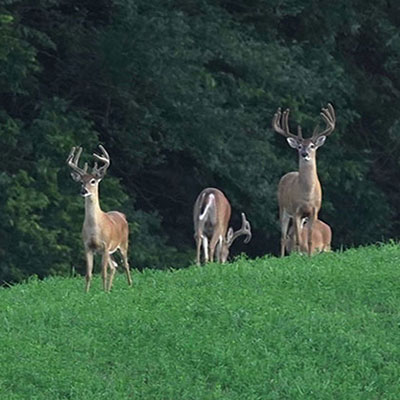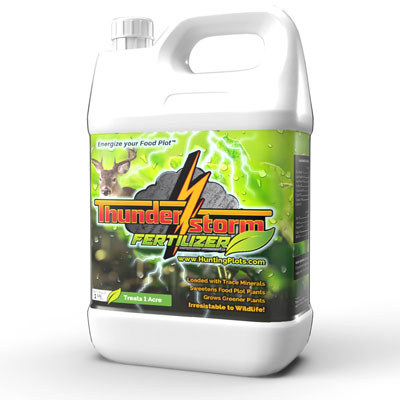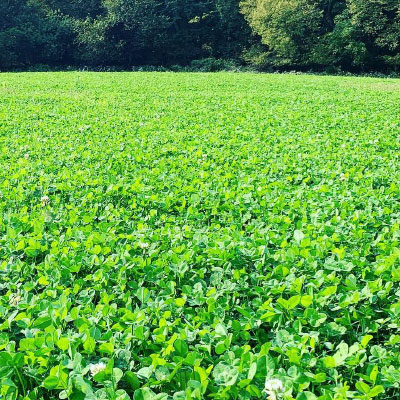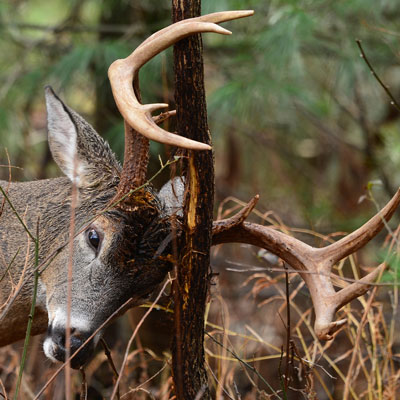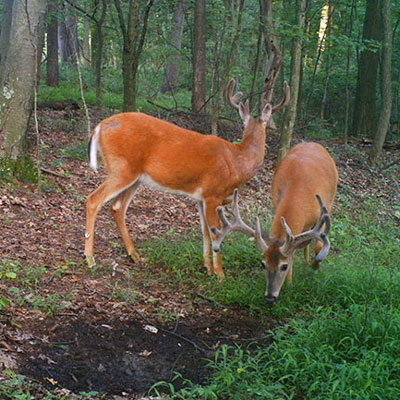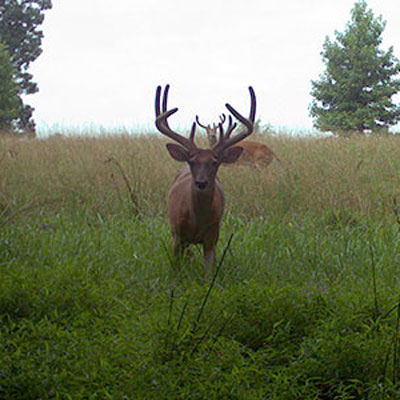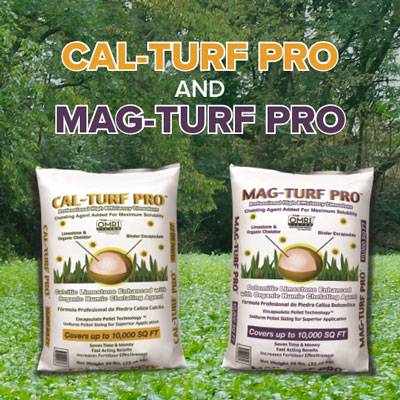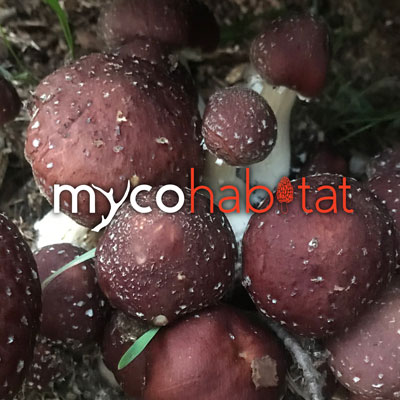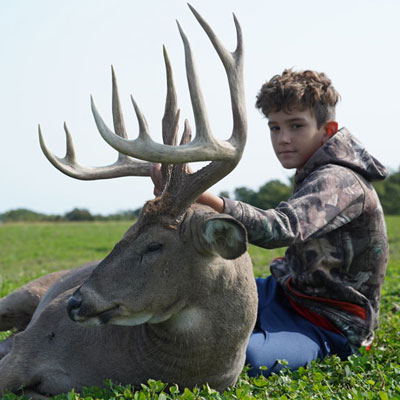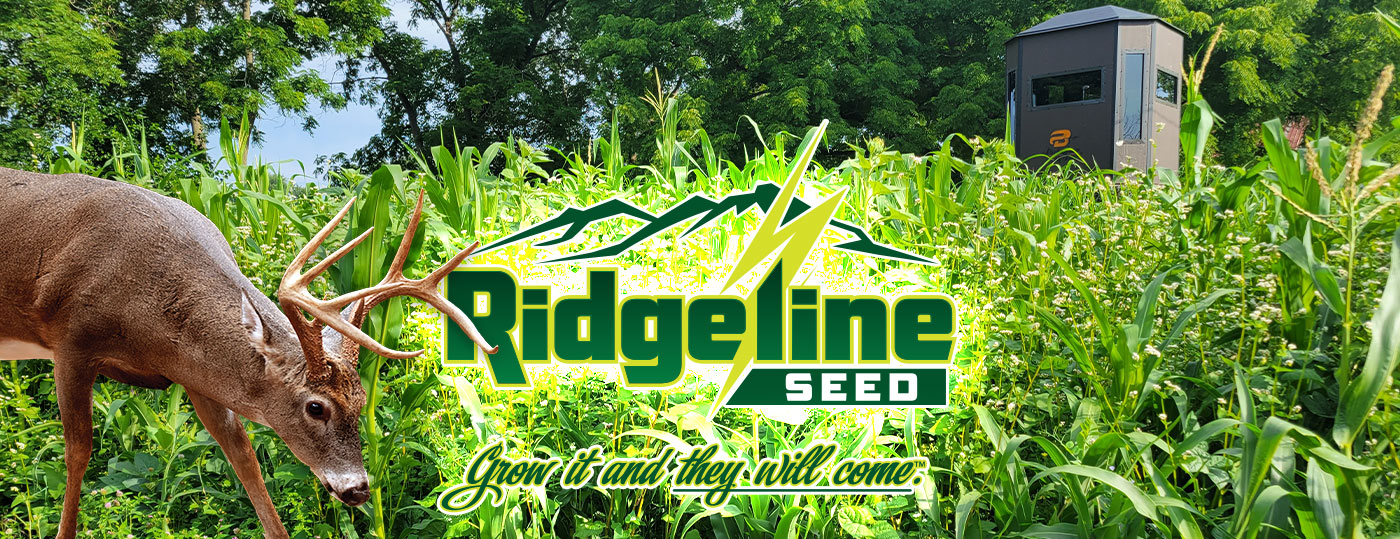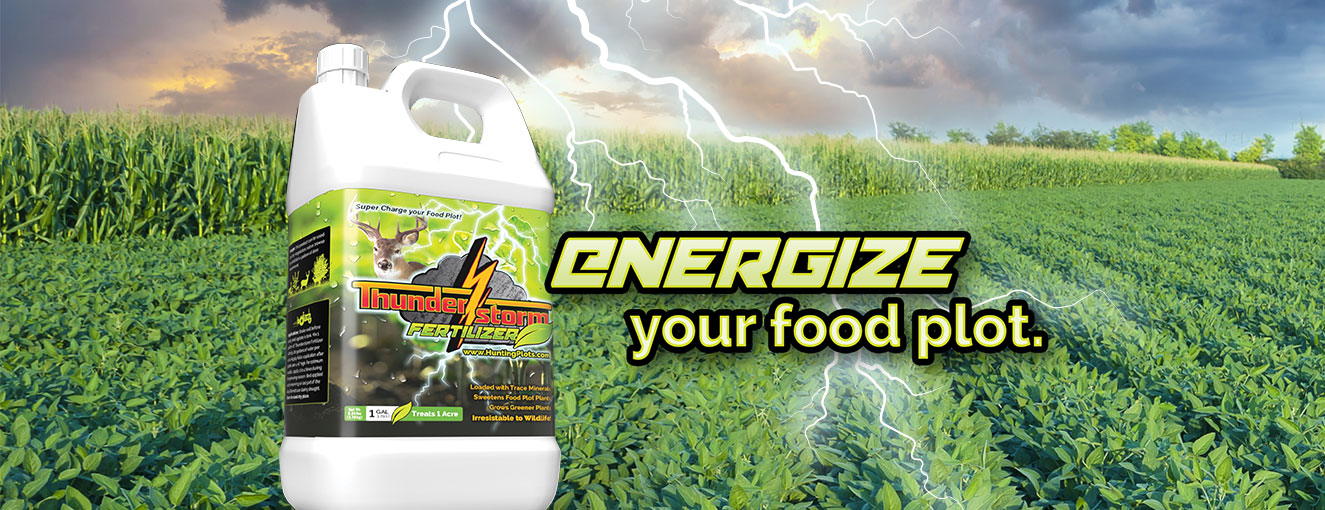
Episode 01 | 2023 | John Stoltzfus |
(More Episodes)
Frost Seeding
Welcome to the frost seeding recording. So, to give you an explanation of the benefit of frost seeding, and answer some questions that I often get, I will try to do that, and hopefully make it easy to understand, and also help you get a better understanding of when you should frost seed, and how to frost seed to have it be most successful.
So when is the right time to frost seed? So, I guess to answer that, I'll explain the process of how does frost seeding work. So, you will need to - for frost seeding - you will need to have freezing and unthawing happening for that seed to set in. So, what happens to the ground - when it freezes - if you look at the ground on a cold frosty morning, and you look at ground, especially ground that's exposed, that doesn't have much vegetation on it, you can see the ground is all crusted and cracked, there's a lot of cracks in the ground. It has made openings and crest and really some small crusting going on, and so that is the time that you wanna spread your seed; if it's freezing at night and unthawing in the daytime. And if you get several mornings like that, that's all it takes - or several days like that, I should say - that's all it takes for that small clover seed to find those crusts and cracks and get that seed-to-soil contact.
So I usually say I'm looking for opportunities starting in about end of February or the last couple weeks of February all the way into March, or even all the way to the beginning of April if you're in the Northern states where you still get freezing at night and unthawing in the daytime.
Our number one seed that we frost seed is clover, but there's also people that frost seed switch grass. The other thing that can work is if you're watching the forecast and you see a snow coming. Frost seeding right before that snow, and then you have the snow come down on top of it, and as that melts and the ground unthaws, it will set those seeds in and get that good seed-to-soil contact.
So the only thing that is probably not gonna be real effective is if you have a grass field that's been grassed for so many years and the grass is just dormant. And even though it's crusted and cracked - some of the seed might find its way into the soil - the grass is probably gonna be so aggressive in the spring that it still might choke out that clover seed, and it might not be able to set roots - or get enough roots - to survive. Some might make it, and if you don't have equipment to work food plots, then frost seeding is the answer.
It's a lot less equipment; you don't need to rent a seeder or drill. But think about the prior fall. What we love to do is put in a brassica or brassica and cereal grain mix like the Ridgeline Rage has worked really good for us where we had Ridgeline Rage in the fall. Beans that has a decent amount of annual clover in it; that has worked really well to get a clover plot established.
You can go in, in February, March, broadcast into that, and your rye and triticale and your crimson clover will come up in the spring. Your other clovers are being established - your perennial clovers are being established. And then as that grows tall, maybe in - depending on what area - may or June, beginning of June, you can mow off that rye and triticale and crimson and it will give sunlight to the other clovers - the low growing clovers that are coming, the perennial clovers - and then that can take off and take over as your vegetation. And it kind of worked as a nurse crop, so the weeds didn't germinate as quickly in the spring and summer, early summer, while the other clover was getting established.
Frost seeding for clover is a technique that a lot of people use and awesome for small plots - even small plots that you had planted clover in prior years - and it got over browsed, you can go in and thicken it up with frost seeding. Not only just for small plots, but for even bigger plots if it got hit hard or the ones on the edges, you can use the frost seeding method to help thicken it up and get a better stand.
So, I think that about covers what I had in mind for clover frost seeding, you wanna do it when the freezing at night, and I prefer to broadcast that on in the morning - first thing in the morning - while it's still crusted and cracked, and then as soon as the sun comes up and it warms up, the soil warms up and it goes back and closes those holes and crusts and stuff and it gets that seed set in. Seed-to-soil contact is the biggest thing, so again, if you're looking to frost seed, make sure that you have the right thing planted in the prior year, so that you can go in there and there's enough of soil exposed for those seeds to fall in and hit the ground.
Now the other thing that I wanted to touch a little bit; we are gonna be doing that this year for the first, we have frost seeded oats already with okay results. But oats are a more fluffy bigger seed, and so the past couple years we have been using a lot of triticale, which is a wheat-rye hybrid. It's a harder seed, a smaller seed than oats, and we feel it's gonna fall down into those cracks and crusts a little bit better than the oats and probably take hold a little bit better. So in plots that got over browsed, even though we layered some of those plots with triticale afterwards, we're gonna try frosting triticale.
The big thing about frost seeding and getting something to sprout early - before there's a lot of vegetation in the woods, and before a lot of the farm fields maybe have something growing in them that they can eat - is just giving those deer something in that late winter, early spring. So, you can go in and frost seed triticale and that has been - the Gunner Triticale especially - is a variety that we have that has greened up before even rye does, so we're excited to try that. We will let you know how that goes for us, and before we recommend it more, we want to try it ourselves, but if anybody likes to experiment, then that's something that you could try.
Switchgrass. We'll talk a little bit about frost seeding switch grass. So if you're gonna frost seed switch grass, you would need to have prepared that and sprayed roundup the prior fall. So August, September - maybe even a couple times - to make sure that there's no vegetation that's gonna come back. And then, after you frost seed, you could actually put down a pre-emergence called Simazine. It will not affect the emergence of switch grass, but it'll keep your other grasses from growing in the spring. Then, after the switch grass - after you know the switch grass is established - then you could go in and also spray it with 2,4-D to kill any broad leaf. But I will cover that more in another recording on Switchgrass. I need to put a recording together for that.
So that is about it for what's on my mind for frost seeding, but if you have any additional questions, don't hesitate to call. This recording is to help try and answer questions that you may have about frost seeding without you - or a bunch of people - needing to call. So I'm hoping to answer some questions with these recordings.
As always, remember, if you are out there, take time to enjoy the blessings.
More Episodes











